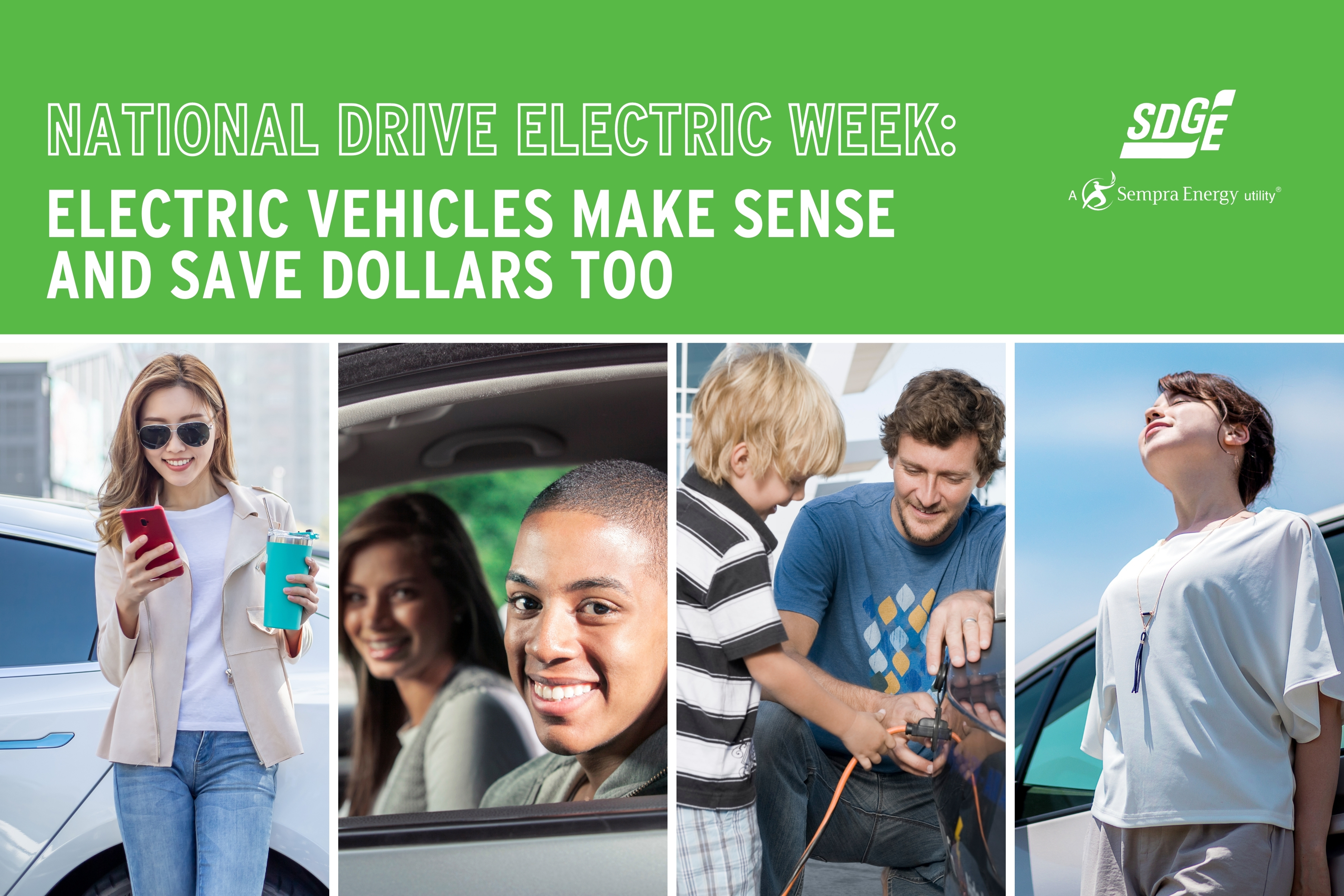National Drive Electric Week: Electric Vehicles Make Sense and Save Dollars Too
Making the switch from driving a gas-powered car to an electric vehicle (EV) is a big decision. If you are undecided on what your next car would be and have some concerns about leasing or purchasing an electric vehicle, read on and we will address common concerns and questions.
EVs cost more than gas-powered vehicles
There is a misperception out there that it costs more to drive an EV. With the federal EV tax credit and the California Clean Vehicle Rebates offsetting the purchase/leasing price for EVs by thousands of dollars, switching to an EV can be very cost competitive.
In fact, if you look at the total cost of ownership for an EV (including repair and maintenance) vs. the total cost of ownership for a gas-powered car, many customers find that they actually save money.
When you drive an EV, you don’t have to worry about oil changes, coolant, transmission fluid, belts or other engine parts. That’s because pure electric EVs don’t have internal combustion engines that have many moving parts.
Powering an EV can cost less than half of what it costs to fuel a gasoline car. With an average MPG of about 25 and average miles driven in a year at 11,500, SDG&E customers can save around $1,150 per year by charging their vehicle.*
Another added benefit, which is priceless, is that driving an EV contributes to cleaner air because EVs don’t have tailpipes that emit air pollutants. Cleaner air means everyone can breathe a little easier.
What about range anxiety?
For those who love long road trips, the range of an EV is critical. While earlier/older models of EVs have relatively short range, new models can go a few hundred miles on a single charge. For example, the 2020 Chevy Bolt can go 259 miles in one charge. The 2020 Nissan LEAF has a range of up to 226 miles, depending on the size of the batteries installed in the vehicle.
There aren’t enough charging stations out there. What if I am stuck with no where else to charge when my EV runs out of juice?
According to the California Energy Commission’s zero-emission vehicle dashboard, there are more than 62,000 EV chargers spread throughout California. Of that number, more than 6,000 are located in San Diego County. Our company is working to aggressively expand the EV charging network and have already installed more than 3,000 chargers for tenants at 220 municipal facilities, office buildings, apartments and condo complexes. Learn more about our EV infrastructure programs at sdge.com/cleantransportation.
When you are on the go, a number of smartphone apps, such as PlugShare, ChargeHub, and EVgo that can help you find charging stations that are nearest to you.
Driving an EV is too much work and requires too much planning.
Wrong. The vast majority of EV drivers charge up at home. EVs can be plugged into standard household outlets. EV drivers can literally set it and forget it. They can plug in their car after getting home from work, set the time for their EV to start charging during the lowest cost hours – overnight, for example – and leave it plugged in. The next morning, the EV is ready to drive.
No trip to the gas station required.
Face it, there’s never been a better time to drive electric. And once you switch, you’ll never ever have to worry about your hands smelling like gasoline after refueling.
*Assumption: 11,500 miles/year, 25 MPG, charging during EVTOU-5 Super-Off-Peak compared to $3.25 /gallon of gasoline.


